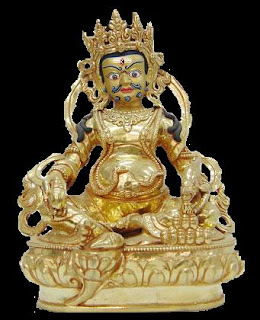॥श्रीदक्षिणामूर्त्यष्टकम्॥
विश्वं दर्पणदृश्यमाननगरीतुल्यं निजान्तर्गतं
पश्यन्नात्मनि मायया बहिरिवोद्भूतं यदा निद्रया ।
यः साक्षात्कुरुते प्रबोधसमये स्वात्मानमेवाद्वयं
तस्मै श्रीगुरुमूर्तये नम इदं श्रीदक्षिणामूर्तये ॥१॥
The universe is the reflection of a mirror. The Truth is the supreme Brahman, the one without a second. The mind, senses and intellect are all able to only discern the reflection of the Atman. The identity of the brahman and the Atman is apparent after self-illumination. I offer my profound salutations to the auspicious Guru, who is an embodiment of Dakshinamurti, and whose grace is responsible for the illumination.
बीजस्यान्तरिवाङ्कुरो जगदिदं प्राङ्निर्विकल्पं पुनः
मायाकल्पितदेशकालकलनावैचित्र्यचित्रीकृतम् ।
मायावीव विजृम्भयत्यपि महायोगीव यः स्वेच्छया
तस्मै श्रीगुरुमूर्तये नम इदं श्रीदक्षिणामूर्तये ॥२॥
He in whom this universe, prior to its projection was present like a tree in a seed(unmanifested), and by whose magic this was transformed(manifested) in various forms, by His own will similar to a yogi’s- to that Dakshinamurti, who is embodied in the auspicious Guru, I offer my profound salutations.
यस्यैव स्फुरणं सदात्मकमसत्कल्पार्थकं भासते
साक्षात्तत्त्वमसीति वेदवचसा यो बोधयत्याश्रितान् ।
यत्साक्षात्करणाद्भवेन्न पुनरावृत्तिर्भवाम्भोनिधौ
तस्मै श्रीगुरुमूर्तये नम इदं श्रीदक्षिणामूर्तये ॥३॥
He, by whose light the (unreal) universe appears real, teaches the truth of brahman to those who want to know the Atman through the vedic statement tattvamasi (thou art That) and He Who puts an end to the samsaric cycle – to that Dakshinamurti, who is embodied in the auspicious Guru, I offer my profound salutations.
नानाच्छिद्रघटोदरस्थितहादीपप्रभाभास्वरं
ज्ञानं यस्य तु चक्षुरादिकरणद्वारा बहिः स्पन्दते ।
जानामीति तमेव भान्तमनुभात्येतत्समस्तं जगत्
तस्मै श्रीगुरुमूर्तये नम इदं श्रीदक्षिणामूर्तये ॥४॥
He whose light gleams through the senses like the light emanating from a pot with holes (in which a lamp is kept), He whose knowledge alone brings the state of knowing (I am That), He whose brightness makes everything shine – to that Dakshinamurti, who is embodied in the auspicious Guru, I offer my profound salutations.
देहं प्राणमपीन्द्रियाण्यपि चलां बुद्धिं च शून्यं विदुः
स्त्रीबालान्धजडोपमास्त्वहमिति भ्रान्ता भृशं वादिनः ।
मायाशक्तिविलासकल्पितमहा व्यामोहसंहारिणे
तस्मै श्रीगुरुमूर्तये नम इदं श्रीदक्षिणामूर्तये ॥५॥
Some philosophers contend the body, senses, life-breath, intellect and non-existence (shunya) as the real `I’ (Atman). Their comprehension is worse than that of women, children, blind and the dull. He who destroys this delusion caused by maya (and makes us aware of the Truth)- to that Dakshinamurti, who is embodied in the auspicious Guru, I offer my profound salutations.
राहुग्रस्तदिवाकरेन्दुसदृशो मायासमाच्छादनात्
सन्मात्रः करणोपसंहरणतो योऽभूत्सुषुप्तः पुमान् ।
प्रागस्वाप्समिति प्रबोधसमये यः प्रत्यभिज्ञायते
तस्मै श्रीगुरुमूर्तये नम इदं श्रीदक्षिणामूर्तये ॥६॥
The brillance of sun exists even when intercepted by Rahu during eclipse. Similarly, the power of cognition only remains suspended during deep sleep. The Self exists as pure being even though unrecognized due to the veil of Maya. A person on awakening becomes aware that he was asleep earlier (and the dream was unreal). Similarly, a person who awakens to the consciousness of the Self recognizes his previous state of ignorance as unreal. He by whose grace alone does one awaken to the consciousness of the Self – to that Dakshinamurti, who is embodied in the auspicious Guru, I offer my profound salutations.
बाल्यादिष्वपि जाग्रदादिषु तथा सर्वास्ववस्थास्वपि
व्यावृत्तास्वनुवर्तमानमहमित्यन्तः स्फुरन्तं सदा ।
स्वात्मानं प्रकटीकरोति भजतां यो मुद्रया भद्रया
तस्मै श्रीगुरुमूर्तये नम इदं श्रीदक्षिणामूर्तये ॥७॥
He, whose existence is changeless throughout the various states of the body (like old, young etc) and the mind (waking, dreaming etc), and who reveals the greatest knowledge of Atman by GYaana-mudra (the joining of the thumb and the forefinger of a raised right hand) – to that Dakshinamurti, who is embodied in the auspicious Guru, I offer my profound salutations.
विश्वं पश्यति कार्यकारणतया स्वस्वामिसंबन्धतः
शिष्याचार्यतया तयैव पितृपुत्राद्यात्मना भेदतः ।
स्वप्ने जाग्रति वा य एष पुरुषो मायापरिभ्रामितः
तस्मै श्रीगुरुमूर्तये नम इदं श्रीदक्षिणामूर्तये ॥८॥
He, whose power of Maya enables one to experience the world as multiform (like teacher, disciple, father, son etc) during both the waking and dream states – to that Dakshinamurti, who is embodied in the auspicious Guru, I offer my profound salutations.
भूरम्भांस्यनलोऽनिलोऽम्बरमहर्नाथो हिमांशुः पुमान्
इत्याभाति चराचरात्मकमिदं यस्यैव मूर्त्यष्टकम् ।
नान्यत्किञ्चन विद्यते विमृशतां यस्मात्परस्माद्विभोः
तस्मै श्रीगुरुमूर्तये नम इदं श्रीदक्षिणामूर्तये ॥९॥
He, whose subtle and unmanifest eightfold form causes the moving and unmoving universe, and by whose grace alone does all these manifestation disappear to reveal that `All that exists is Brahman’ – to that Dakshinamurti, who is embodied in the auspicious Guru, I offer my profound salutations.
सर्वात्मत्वमिति स्फुटीकृतमिदं यस्मादमुष्मिन् स्तवे
तेनास्य श्रवणात्तदर्थमननाद्ध्यानाच्च सङ्कीर्तनात् ।
सर्वात्मत्वमहाविभूतिसहितं स्यादीश्वरत्वं स्वतः
सिद्ध्येत्तत्पुनरष्टधा परिणतं चैश्वर्यमव्याहतम् ॥१०॥
The verse points out to the all pervasiveness of the indwelling Spirit, Atman. By the recital, contemplation and meditation of this hymn, the disciple attains the state of oneness with Atman and realizes his unity with the universe,thus becoming the very essence of the eightfold manifestation.
॥इति श्रीदक्षिणामूर्तिस्तोत्रम्॥






